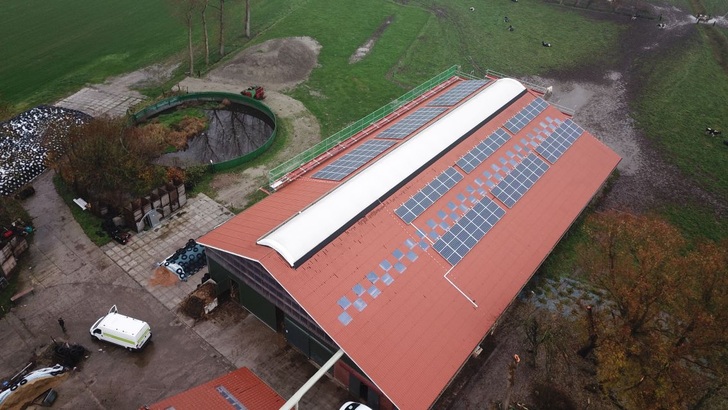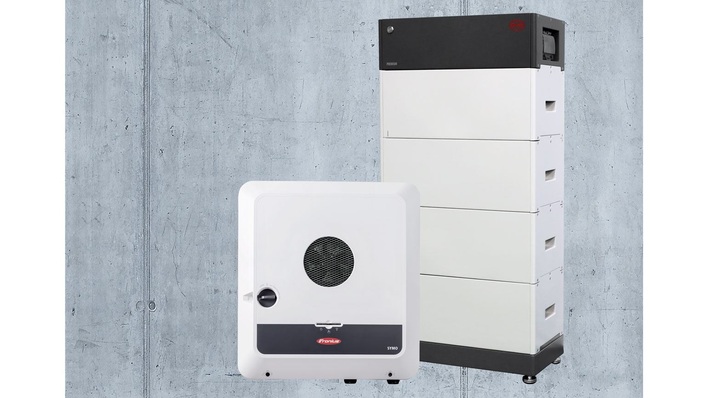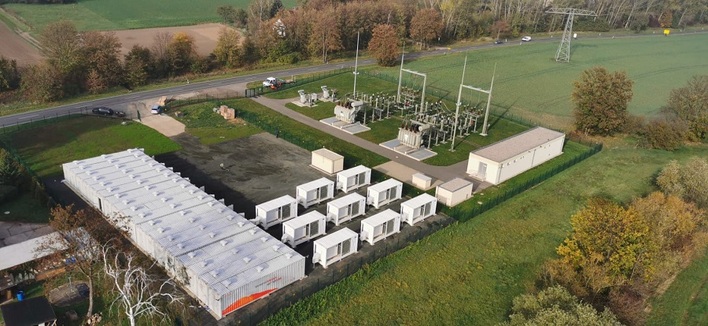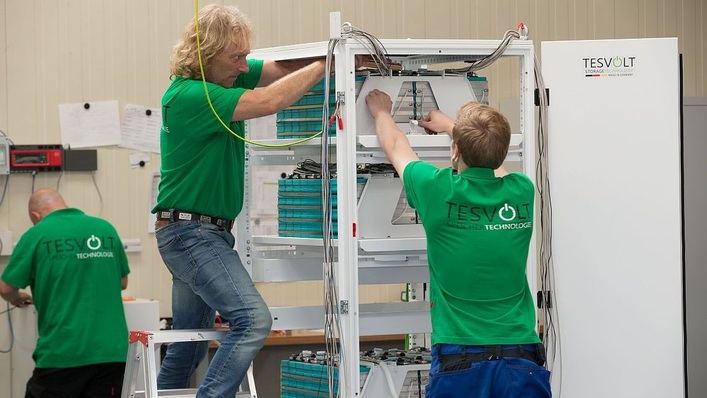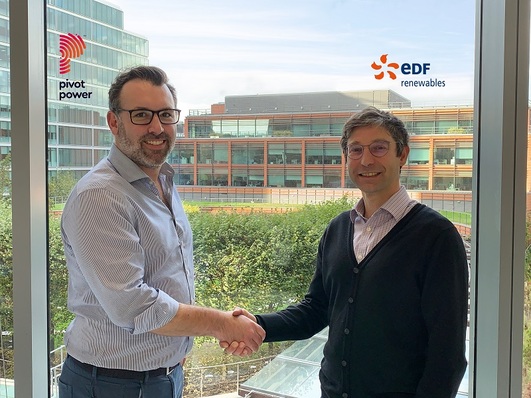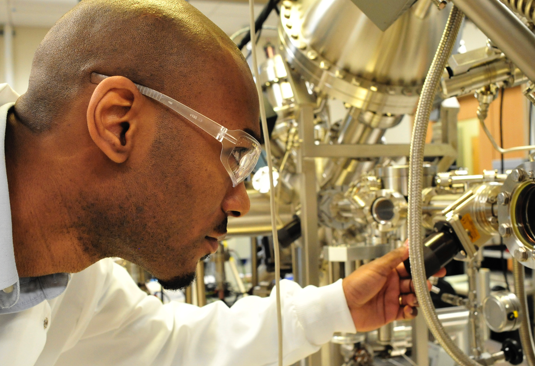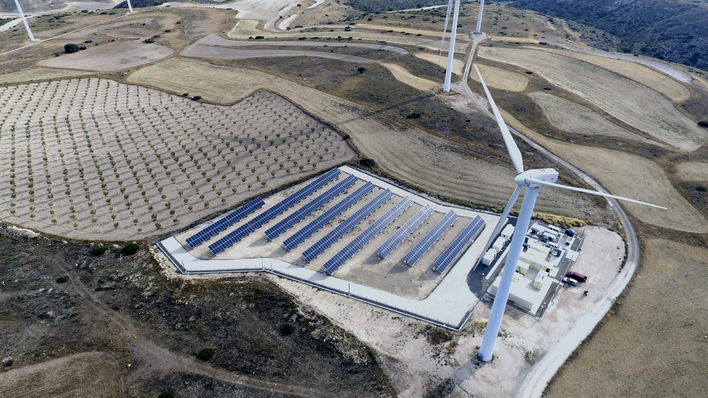In our new segment Topic of the Week, this week we will be delving into the topic of self-sufficiency and how PV can be used to that end:
Many farmers know their way around PV. When there were high feed-in tariffs between 2003 and 2011, they upgraded their roofs with solar panels. The farmers are familiar with subsidies. They quickly understood that photovoltaics pays off.
Now feeding into the grid is no longer worth it. And if the conversation comes around to storage, a common argument is: too expensive and not economical.
That is now a thing of the past. In early November of 2018, Henning Ommen, a farmer in East Frisia, installed a 60-kilowatt solar generator. The battery has a storage capacity of 65 kilowatt hours.
Calculations are child’s play
At the Ommen farm there are 100 dairy cows and five holiday flats. All this consumes about 45,000 kilowatt hours of electricity per year. If Ommen were to buy this from his utility, he would have to pay 26 euro cents per kilowatt hour; a total of 11,700 euros per year.
Now he can cover 80 percent of his electricity demand with solar power. Any surplus energy is collected in the solar battery. That reduces his yearly electricity costs down to about 3,500 euros.
Have you heard of agrophotovoltaics?
So Henning Ommen is saving at least 8,200 euros. Added to that, there are remunerations for surplus electricity fed into the grid in the summer. And because the prices for solar components and storage systems keep on coming down, such installations are actually really economical.
The entire system has generally paid for itself within ten years. And that calculation includes the cost for replacement batteries. And if electricity tariffs will rise in the coming years, it will be even more cost effective. A summer like the last one will generate higher power yields and shortens the pay-off period.
At least 70 percent self-consumption
The Ommen farm is situated a couple of stone’s throws south of the dyke and three kilometres east of the tourist town Carolinensiel. With this self-generation installation, it meets up to 70 percent of its own electricity demand: PV and storage exactly match the farm’s needs. The PV installation was planned and built by Adler Solar in Bremen. And the storage unit comes from Powertrust.
Hauke Heitshusen is in customer service for the battery manufacturer, specialising in tricky bespoke projects. “Because cows need to be milked before sunrise and after sunset, the period of highest power consumption is mostly beyond the period of greatest solar irradiation,” he explains. “For that reason, a PV installation without storage would have made no sense.”
Enough power for agriculture
Powertrust has developed the storage system Crystal Tower, a high-voltage system with 360 volts. Crystal Tower can charge and discharge at 27 kilowatts. That ensures that the energy coming from the roof can be quickly transferred to the battery. On the other hand, the battery can also give off high outputs if required. “Fast charging and discharging is an important factor for the efficiency of a storage battery,” Hauke Heithusen says. “The faster the self-generated power can be stored in the battery, the less of it is fed into the grid and the more of it the farm has available to meet its own demand.”
For the Ommen farm, that was a key criterion, because 60 percent of the demand occurs when there is no direct sunlight. On the other hand, storage for agriculture has to be able to give off sufficient power. It has to be able to easily power the liquid manure agitators and the refrigerated milking machines, and that in a way “that allows the manure to be properly agitated, all of the cows to be properly milked and the milk to be properly refrigerated.”
Do not worry about rising prices
Heithusen is certain, that the investment will have paid for itself within ten years. Henning Ommen does not have to worry about rising electricity prices. Being independent of a utility was crucial for him to make the investment.
The PV array was mounted to the roof of the cowshed. Given the corrugated fibre cement of the roof, hanger bolts and additional effort was required to apply the mounting structure for the solar panels to the roof.
Large-scale storage units need space. And on the Ommen farm the issue of where to put the storage batteries also came up. The farmer had chosen a spot by the outside wall of his cowshed that was covered by an overhanging roof. “That is no problem for the Crystal Tower,” Hauke Heithusen says. “Thanks to their lead crystal battery technology, they can operate almost without losses at temperatures of between minus ten and plus 40 degrees Celsius. And for the inverters this is also no problem as they have the same operating range.” The battery system has been integrated via an AC-connected hybrid inverter.
Scrap lead can be easily recycled
The lead crystal batteries are designed to last more than ten years. Nevertheless, the overall cost estimate over 20 years already factors in the cost for a set of replacement batteries. But a key point is that 98 percent of the material from lead batteries can be recycled and put back into circulation, once they have reached the end of their service life.
At the recycling plant of Berzelius Metall, the lead batteries are shredded and separated into their constituent parts. Lead, plastic and acids are then individually treated and processed. Only two percent of a lead battery are still non-recyclable, because these are plastics that serve as a fuel for melting the lead.
Along with scrap gold, scrap lead is almost 100 percent recyclable. Old lead batteries are not rubbish but a valuable resource that is traded at daily changing prices. And because of the high demand for lead, the prices for old lead batteries rising.
The farm becomes mostly independent
The Ommen farm demonstrates that newly installing PV and storage can make sense both economically and in general. In terms of energy, the farm becomes mostly independent from any utility. The lead-crystal battery technology has a number of advantages: no risk of fire or explosions, no leakage, no outgassing.
If the PV installation and the battery unit are dimensioned to meet the requirements of the farm, installing a system is just as economical as it was before 2010 when all that was at stake was feed-in tariffs and rates of return.
In the long run, the investment is even more lucrative, because the prices for grid power are on the rise. And then there is the good feeling of being self-sufficient. And the holiday makers have something else to talk about when they discover that the Ommen farm not only produces milk and eggs, but also clean electricity right from the roof of the cowshed. (HS, mfo)
In case you missed them, here are Part 1, Part 2 and Part 3 of our series. Tomorrow we will zoom out, as it were, and take a much broader view on self-sufficiency in Europe.


